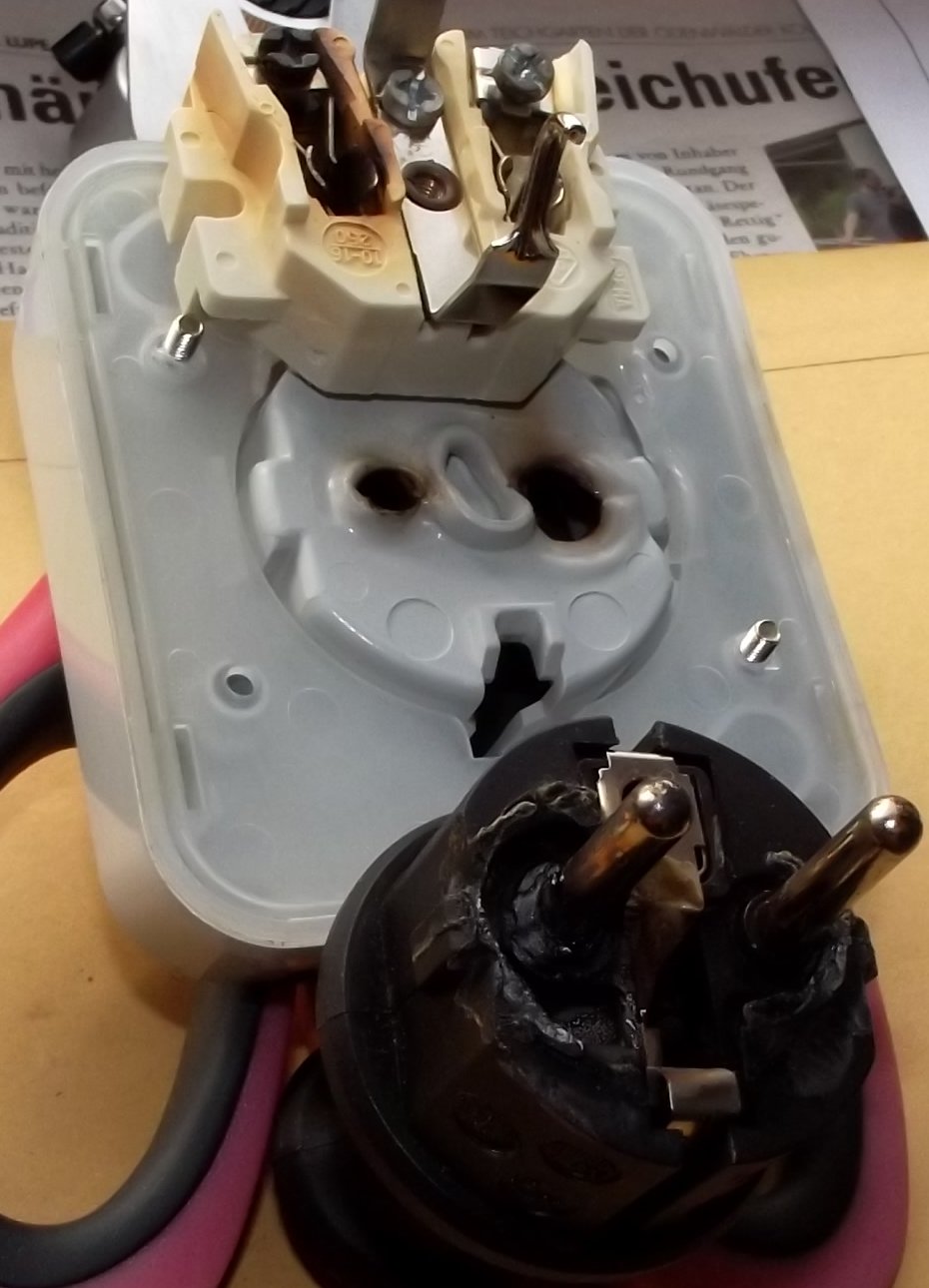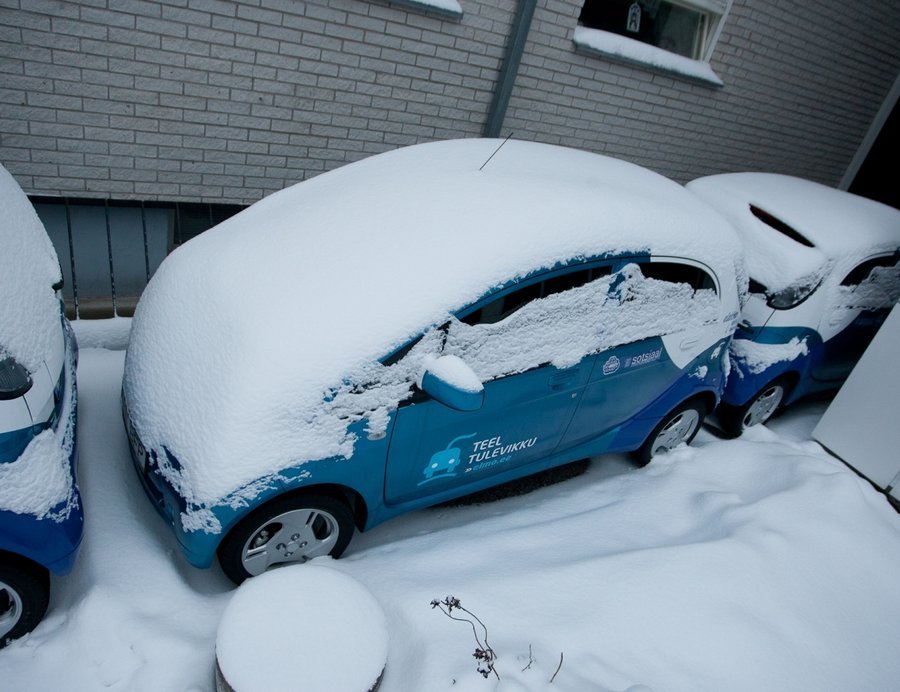And beware of fuses in series.
This used to be my charging socket for more than a year. I was always lamenting about Schuko plugs and sockets and ruined many of them. I have long since modified everything to CEE 230V/16A and adapters for CEE 400V/16A and 32A.
This one was smelling loud enough for my landlord to agree in replacing the final Schuko with a CEE 230V/16A or Blue Command Socket.
This used to be in a circuit with a fuse tripping at 16A and trip it did never. The line to our car is some 25 meters 2.5 mm squared. In the house there is another 10 meters looking like 1.5 mm squared.
Bad thing about Schukos they love to tilt when the cord pulls down. That gets a smaller surface, that gets hotter because it has more resitance. That gets even more resitance because of the heat ... and the case melts and allows for more tilting.
A rat race that will never trip the fuse except for a very unlikely short and even that short has too much of a resitance most of the time.
Shunts and fuses are working mostly the same way. Shunt: current through a resistor results in voltage that keeps telling the BMU how much current flows. Side effect voltage times amperes gives heat radiated from the resistor and of coarse a voltage drop over the resistor.
Fuse: current through a resistor drops voltage. Voltage times current gives heat and the fuse melts. Side effect voltage drop over the resistor.
Putting two fuses in series might result in half the current and none of them blowing. There may be reasons for splitting circuits and putting fuses in every branch but think twice and never put fuses of the same size in series. Before putting three fuses in series in a rats nest of wires send an invitation the the fire brigade. You might need them. Fuses do produce heat. Never put them on wood.
In our car things are even more tricky with stuff that can burn and circuits of high and not so high voltages. In a house you always have yet another fuse just in case and mostly you wont see more than some 20 amperes but in our car with a motor that needs some 500 amperes there is no more fuse. That is why the mitsu people are wearing a divers suit with googles and all before touching our main battery.
Cheers
Peter and Karin
 .
.



































